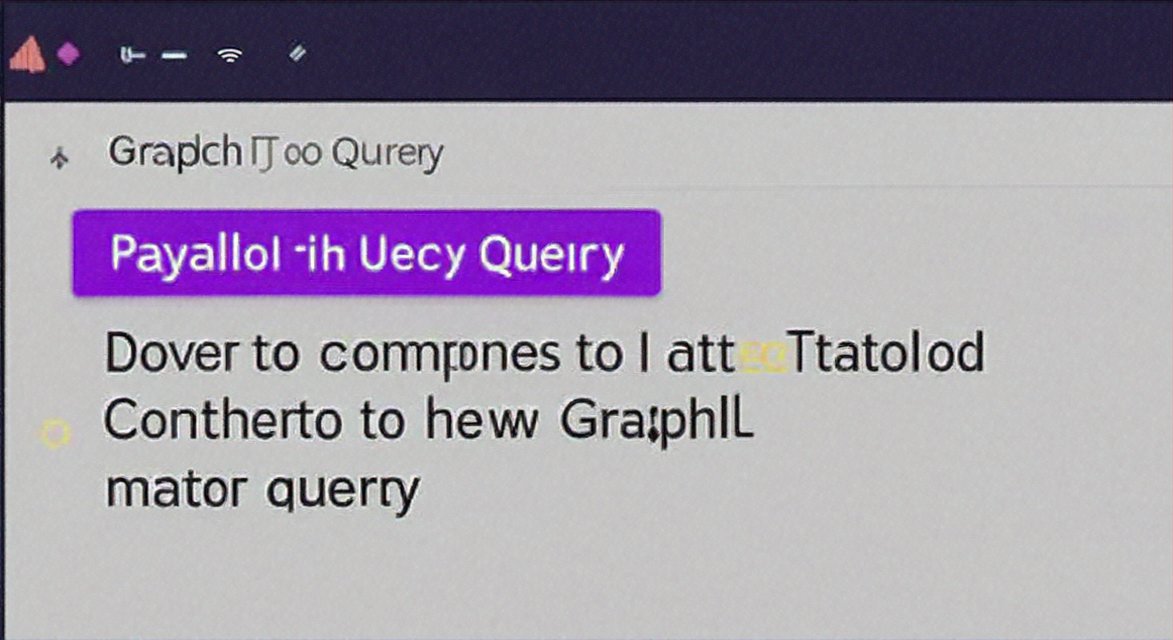Streamline Your Data Handling: A Step-by-Step Guide to Converting Payloads to GraphQL Queries 🌐

In today's fast-paced digital world, efficient data handling is crucial for any business or developer. GraphQL, a powerful and flexible data query language, has gained immense popularity for its ability to provide the exact data needed, reducing over-fetching and under-fetching. One of the key aspects of GraphQL is the conversion of payloads into GraphQL queries. This guide will walk you through the process of converting payloads to GraphQL queries, streamlining your data handling and enhancing your application's performance.
Understanding Payloads and GraphQL Queries 📦
Before diving into the conversion process, it's essential to understand what payloads and GraphQL queries are.
Payloads
A payload is a collection of data that is sent from a client to a server. It typically contains information that the client wants to process or manipulate. Payloads can be in various formats, such as JSON, XML, or even plain text.
GraphQL Queries
A GraphQL query is a request made by a client to a GraphQL server, asking for specific data. GraphQL queries are written in a structured format that allows clients to request exactly the data they need, without any additional information.
Step 1: Analyze the Payload 🔍
The first step in converting a payload to a GraphQL query is to analyze the payload and understand its structure. This involves identifying the data types, relationships, and any other relevant information.
Identifying Data Types
Identify the data types present in the payload. For example, if the payload contains user information, you might have data types like User, Profile, and Address.
Understanding Relationships
Determine the relationships between different data types. For instance, a User might have a Profile and an Address. Understanding these relationships will help you construct the appropriate GraphQL query.
Step 2: Construct the GraphQL Query 📝
Once you have analyzed the payload, it's time to construct the GraphQL query. This involves using the identified data types and relationships to create a structured query.
Starting with the Root Type
Begin by specifying the root type of your query. For example, if your payload contains user information, the root type might be User.
graphql query { user { ... } }
Adding Fields and Arguments
Add fields and arguments to the query based on the data types and relationships identified in the payload. For example, if you want to retrieve the user's name and email, you can add the name and email fields to the User type.
graphql query { user { name email } }
Handling Relationships
If there are relationships between data types, you can use nested queries to retrieve related data. For example, if a User has a Profile, you can add a nested query to retrieve the profile information.
graphql query { user { name email profile { bio location } } }
Step 3: Test and Refine the Query 🛠️
After constructing the GraphQL query, it's crucial to test and refine it to ensure it retrieves the desired data. This involves running the query against the GraphQL server and verifying the results.
Running the Query
Run the query using a GraphQL client or tool. This will send the query to the server and return the results.
Verifying the Results
Check the results to ensure they match the expected data. If there are any discrepancies, refine the query by adding or modifying fields and arguments.
Step 4: Optimize the Query 🚀
Once the query is working correctly, it's time to optimize it for performance. This involves reducing the amount of data fetched and improving the query's efficiency.
Reducing Data Fetching
To reduce data fetching, you can use GraphQL's ability to request only the necessary fields. This can be achieved by using the @include and @skip directives.
graphql query { user @include(if: $includeProfile) { name email profile { bio location } } }
Improving Query Efficiency
To improve query efficiency, you can use GraphQL's caching capabilities. This involves storing the results of queries and serving them from the cache when the same query is made again.
Conclusion
Converting payloads to GraphQL queries is a crucial step in streamlining your data handling and enhancing your application's performance. By following this step-by-step guide, you can effectively convert payloads to GraphQL queries, ensuring that your application retrieves the exact data it needs.
References
- GraphQL: The Next Generation of Data Fetching
- Understanding GraphQL Queries
- Optimizing GraphQL Queries
- Caching in GraphQL
- GraphQL Best Practices
🔗 1. GraphQL: The Next Generation of Data Fetching 🔗 2. Understanding GraphQL Queries 🔗 3. Optimizing GraphQL Queries 🔗 4. Caching in GraphQL 🔗 5. GraphQL Best Practices

